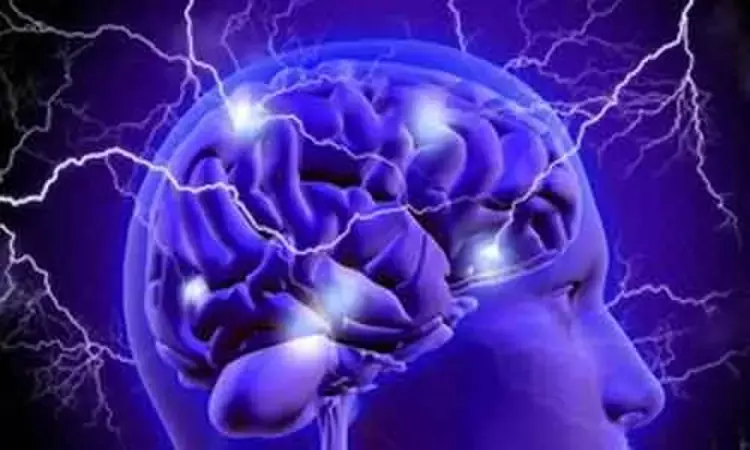- Home
- Medical news & Guidelines
- Anesthesiology
- Cardiology and CTVS
- Critical Care
- Dentistry
- Dermatology
- Diabetes and Endocrinology
- ENT
- Gastroenterology
- Medicine
- Nephrology
- Neurology
- Obstretics-Gynaecology
- Oncology
- Ophthalmology
- Orthopaedics
- Pediatrics-Neonatology
- Psychiatry
- Pulmonology
- Radiology
- Surgery
- Urology
- Laboratory Medicine
- Diet
- Nursing
- Paramedical
- Physiotherapy
- Health news
- Fact Check
- Bone Health Fact Check
- Brain Health Fact Check
- Cancer Related Fact Check
- Child Care Fact Check
- Dental and oral health fact check
- Diabetes and metabolic health fact check
- Diet and Nutrition Fact Check
- Eye and ENT Care Fact Check
- Fitness fact check
- Gut health fact check
- Heart health fact check
- Kidney health fact check
- Medical education fact check
- Men's health fact check
- Respiratory fact check
- Skin and hair care fact check
- Vaccine and Immunization fact check
- Women's health fact check
- AYUSH
- State News
- Andaman and Nicobar Islands
- Andhra Pradesh
- Arunachal Pradesh
- Assam
- Bihar
- Chandigarh
- Chattisgarh
- Dadra and Nagar Haveli
- Daman and Diu
- Delhi
- Goa
- Gujarat
- Haryana
- Himachal Pradesh
- Jammu & Kashmir
- Jharkhand
- Karnataka
- Kerala
- Ladakh
- Lakshadweep
- Madhya Pradesh
- Maharashtra
- Manipur
- Meghalaya
- Mizoram
- Nagaland
- Odisha
- Puducherry
- Punjab
- Rajasthan
- Sikkim
- Tamil Nadu
- Telangana
- Tripura
- Uttar Pradesh
- Uttrakhand
- West Bengal
- Medical Education
- Industry
Interpretations of CT head at mobile devices reliable for IV thrombolysis in stroke

Leesburg, VA, February 12, 2020-Researchers conducted a study to evaluate the accuracy and reliability of IV thrombolysis recommendations made after interpretation of head CT images of patients with symptoms of acute stroke displayed on smartphone or laptop reading systems compared with those made after interpretation of images displayed on a medical workstation monitor.
They found that mobile devices proved both reliable and accurate for the clinical decision to administer IV thrombolysis in patients with acute stroke, according to an ahead-of-print article in the April issue of the American Journal of Roentgenology (AJR).
To assess reliability and accuracy of IV thrombolysis recommendations made after interpretation of head CT images of patients with acute stroke symptoms displayed on smartphone or laptop reading systems--compared with those made after interpretation of images displayed on a medical workstation monitor--Antonio J. Salazar at the University of Los Andes in Bogotá, Columbia utilized a factorial design with 188 patients, four radiologists, and three reading systems to produce 2256 interpretations.
To evaluate reliability, Salazar and colleagues calculated the intraobserver and interobserver agreements using the intraclass correlation coefficient (ICC) and five interpretation variables: hemorrhagic lesions, intraaxial neoplasm, stroke dating (acute, subacute, chronic), hyperdense arteries, and infarct size assessment. Accuracy equivalence tests were also performed for the IV thrombolysis recommendation; for this variable, sensitivity, specificity, and ROC curves were evaluated.
Good or very good intraobserver agreements were observed for all the variables. Specifically, for those variables required to establish contraindications for IV thrombolysis, the agreements were ranked as very good. "This finding is important," wrote Salazar et al., "because it reflects the good performance of mobile devices to evaluate the most significant imaging variables for clinical decisions."
For IV thrombolysis recommendation, the main subject of this evaluation, the interobserver agreements for the three reading systems were ranked as very good (ICC > 0.88). Similarly, very good intraobserver agreements were observed for all comparisons (ICC > 0.84). The AUC values (0.83-0.84) and sensitivities (0.94-0.95) for IV thrombolysis recommendation were equivalent among all the reading systems at a 5% equivalent threshold.
A unique assessment of imaging-based recommendations for the administration of IV recombinant tissue plasminogen activator based on unenhanced brain CT scans, Salazar also noted: "These results constitute a strong foundation for the development of mobile-based telestroke services because they increase neuroradiologist availability and the possibility of using reperfusion therapies in resource-limited countries."
For further reference log on to:
Dr Kamal Kant Kohli-MBBS, DTCD- a chest specialist with more than 30 years of practice and a flair for writing clinical articles, Dr Kamal Kant Kohli joined Medical Dialogues as a Chief Editor of Medical News. Besides writing articles, as an editor, he proofreads and verifies all the medical content published on Medical Dialogues including those coming from journals, studies,medical conferences,guidelines etc. Email: drkohli@medicaldialogues.in. Contact no. 011-43720751


